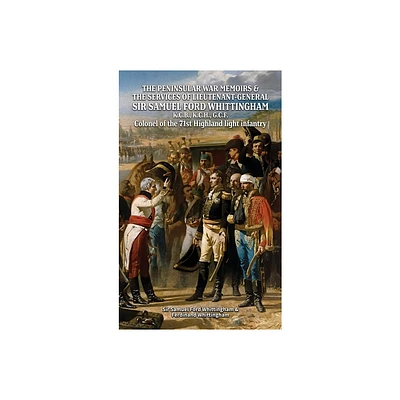Home
the Light Division Peninsular War, 1808-1811
Loading Inventory...
Barnes and Noble
the Light Division Peninsular War, 1808-1811
Current price: $42.95


Barnes and Noble
the Light Division Peninsular War, 1808-1811
Current price: $42.95
Loading Inventory...
Size: Hardcover
*Product Information may vary - to confirm product availability, pricing, and additional information please contact Barnes and Noble
The evolution and pivotal role of Wellington's Light Division in the Peninsular campaigns emphasized strategic innovations and experiences of light infantry soldiers beyond conventional battle narratives.
Histories of the Light Division have tended to be incomplete, being based on memoirs of a few well known diarists, principally from the 95th Rifles. The authors of this book, the first volume of two, have sought memoirs from across the division, including the artillery, the King’s German Hussars and others to complete a broader history of Wellington’s elite division.Light infantry was not new a concept in 1803, but at Shorncliffe Camp Sir John Moore developed a progressive ethos, set of tactics and training for the newly converted light infantry regiments. With the 95th Rifles they were melded into a brigade that was to form the basis of the incomparable Light Division.From the outset of the Peninsular campaigns in 1808 they delivered results way beyond their scant numbers, but it was during the epic winter retreat to La Corunna that they showed their metal. Returning to the Peninsular months later, the irascible Brigadier Craufurd led the Light Brigade in terrible march to reach Wellington at Talavera; heavily laden and in the heat of summer.Over the winter of 1809/10, Craufurd's battalions, now elevated to the status of a division, provided the army’s outposts. This was work that Craufurd excelled in and actions abounded, including the Combat on the Côa, where the division fought hard to escape Marshal Ney’s trap.In 1810, with Wellington withdrawing to the Lines of Torres Vedra, the Light Division played a significant part in the battle of Buçaco Ridge, while the following year they drove Marshal Masséna’s army back into Spain having fought almost daily actions en route.This history of the Light Division is not simply a series of set piece battles but provides a wider picture of campaigning and what it was to be a light infantry soldier.
Histories of the Light Division have tended to be incomplete, being based on memoirs of a few well known diarists, principally from the 95th Rifles. The authors of this book, the first volume of two, have sought memoirs from across the division, including the artillery, the King’s German Hussars and others to complete a broader history of Wellington’s elite division.Light infantry was not new a concept in 1803, but at Shorncliffe Camp Sir John Moore developed a progressive ethos, set of tactics and training for the newly converted light infantry regiments. With the 95th Rifles they were melded into a brigade that was to form the basis of the incomparable Light Division.From the outset of the Peninsular campaigns in 1808 they delivered results way beyond their scant numbers, but it was during the epic winter retreat to La Corunna that they showed their metal. Returning to the Peninsular months later, the irascible Brigadier Craufurd led the Light Brigade in terrible march to reach Wellington at Talavera; heavily laden and in the heat of summer.Over the winter of 1809/10, Craufurd's battalions, now elevated to the status of a division, provided the army’s outposts. This was work that Craufurd excelled in and actions abounded, including the Combat on the Côa, where the division fought hard to escape Marshal Ney’s trap.In 1810, with Wellington withdrawing to the Lines of Torres Vedra, the Light Division played a significant part in the battle of Buçaco Ridge, while the following year they drove Marshal Masséna’s army back into Spain having fought almost daily actions en route.This history of the Light Division is not simply a series of set piece battles but provides a wider picture of campaigning and what it was to be a light infantry soldier.


















